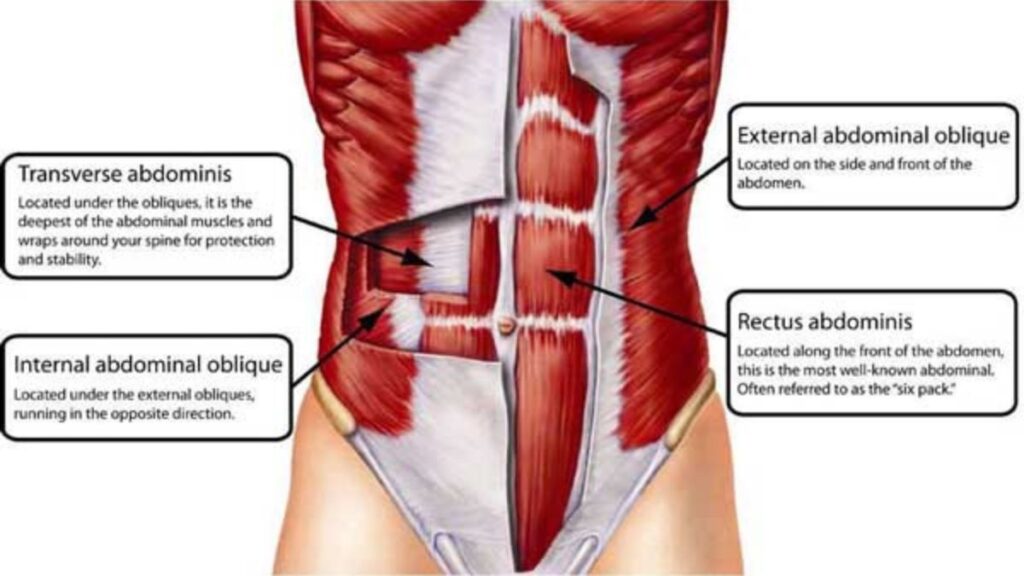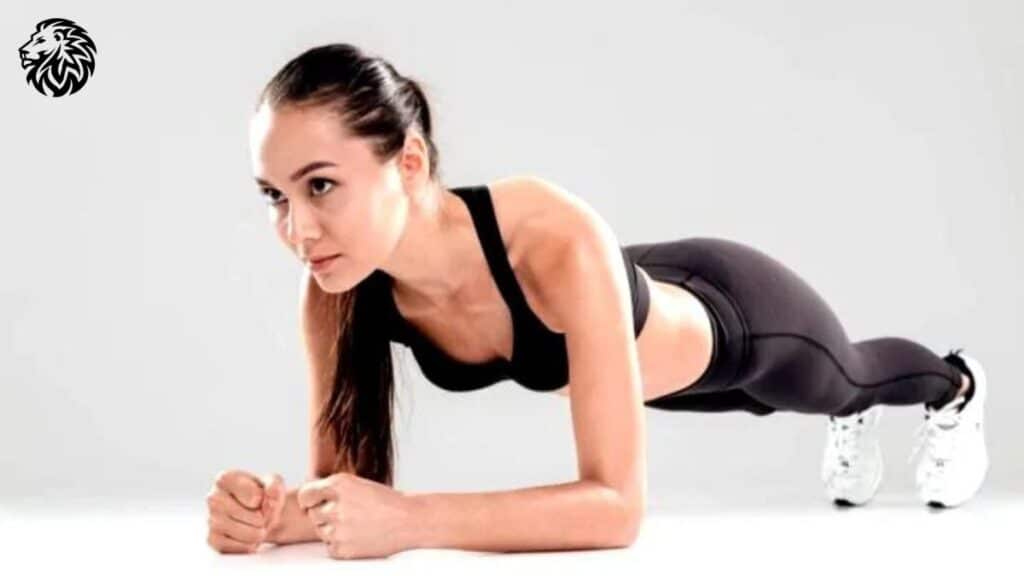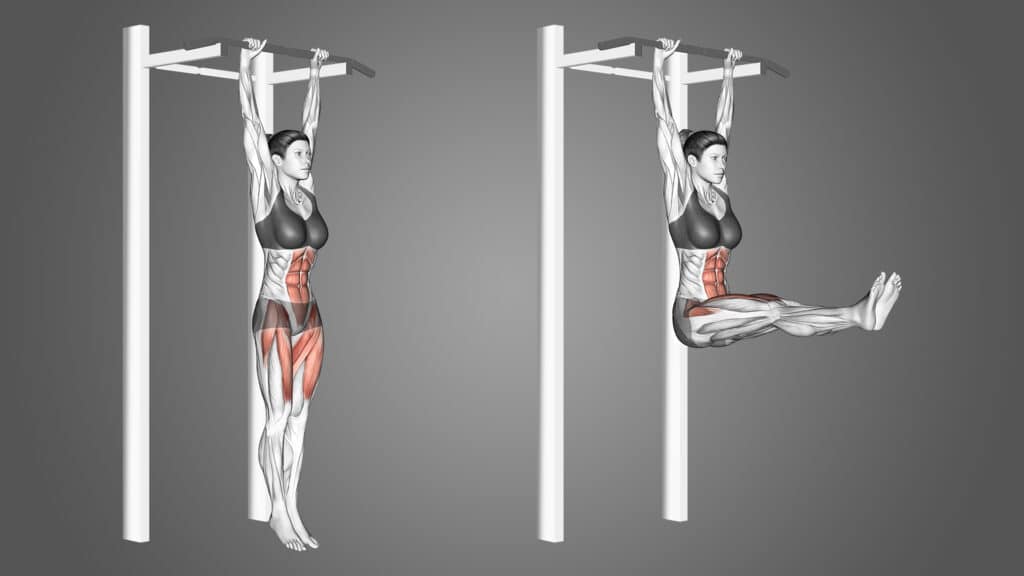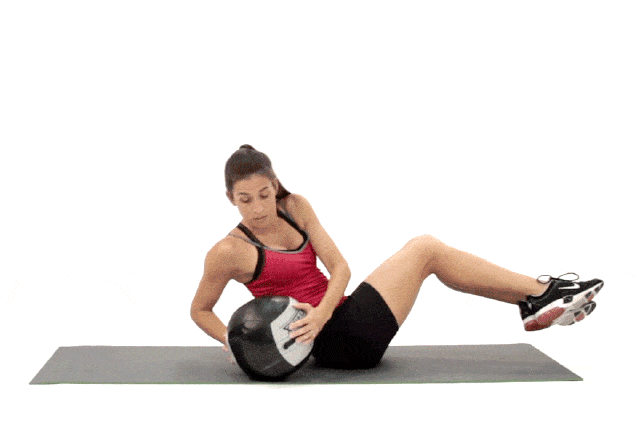The allure of a chiseled six-pack has long captured the attention of fitness enthusiasts and casual gym-goers alike. But beyond the aesthetic appeal, a strong core is pivotal for much more. Serving as the body’s central powerhouse, the core provides stability, supports posture, and facilitates a range of movements, from basic daily tasks to complex athletic feats.
Yet, in our quest for that toned midsection, a common misconception has prevailed: the need for an exhaustive list of exercises. The reality? Achieving a robust core doesn’t require an endless repertoire of movements. Instead, it demands focused, consistent effort on a few, highly effective exercises. Let’s debunk the myth of quantity over quality and delve into the only three core exercises you truly need for that coveted six-pack.
Anatomy of the Core

The core, often perceived as just the front of the belly, is actually a complex group of muscles that extend far beyond the visible ‘six-pack’. Understanding its anatomy can provide insight into its function, as well as help optimize our training. Let’s break down the primary muscles and their significance in daily activities and sports.
Rectus Abdominis
- Description: This is the muscle most people envision when they think of the “six-pack”. It runs vertically along the front of the abdomen.
- Function: Responsible for flexing the lumbar spine (as when doing a crunch). In daily life, it aids in movements like bending forward or lifting objects. In sports, it plays a role in actions such as jumping or doing a sit-up.
Obliques
- Description: Comprising both internal and external obliques, these muscles are located on the sides of the abdomen.
- Function: They play a critical role in rotating the torso and side-bending. Think of any movement where you twist, like turning to grab something from the backseat of a car or swinging a baseball bat; that’s your obliques in action.
Transversus Abdominis
- Description: The deepest of the abdominal muscles, it wraps around the spine and functions much like a corset.
- Function: Its primary role is in stabilizing the core and maintaining internal abdominal pressure. Whenever you brace your core, whether it’s to lift a heavy box or hold a yoga pose, the transversus abdominis is at work. In sports, it provides stability, ensuring athletes can move powerfully and safely.
In essence, these core muscles are central not just in our workout regimes, but in almost every movement we make. Whether you’re a runner, a dancer, or someone just looking to play with their kids without a hint of back pain, a strong core is the foundation upon which these actions are built.
The Three Essential Exercises
1. Planks (and its variations)

Description and Benefits:
The plank is a timeless bodyweight exercise that engages not just the core, but also the shoulders, back, and glutes. It is a versatile and foundational movement for anyone aiming for a stronger midsection.
- Strengthen the Entire Core: One of the standout qualities of the plank is its ability to target the entire core, from the visible rectus abdominis to the deep-seated transversus abdominis. This comprehensive engagement ensures balanced strength and muscle tone.
- Improve Posture and Stability: Regularly performing planks can enhance one’s posture by training the muscles that keep us upright. This, in turn, reduces the risk of back and neck issues. Furthermore, a solid plank helps improve stability, a key component in most athletic and day-to-day activities.
Proper Form and Common Mistakes:
- Form: Begin in a push-up position, but with your weight on your forearms instead of your hands. Your body should form a straight line from head to heels. Engage your core, squeeze your glutes, and ensure your neck is neutral.
- Common Mistakes:
- Sagging Hips: A common error is letting the hips drop, which can strain the lower back. Always aim to keep the body in a straight line.
- Elevated Hips: Conversely, hiking the hips too high takes the tension away from the core.
- Neck Strain: Looking too far ahead or tucking the chin can strain the neck. Aim for a neutral gaze.
Variations:
- Side Plank: Lying on one side, prop yourself up on one elbow and stack your feet on top of each other. Lift your hips off the ground, keeping a straight line from head to heels. This variation targets the obliques.
- Forearm Plank: Instead of propping yourself up on your hands, rest your weight on your forearms. This reduces stress on the wrists and shifts the workout emphasis slightly.
- Plank with Leg Lift: From a traditional plank position, raise one leg a few inches off the ground, hold, then switch. This addition challenges the glutes and requires more stabilization from the core.
Incorporating these plank variations into your routine can provide diverse challenges and ensure comprehensive core development.
2. Hanging Leg Raises (or Captain’s Chair Leg Raises)

Description and Benefits:
Hanging Leg Raises, often performed using a pull-up bar or the Captain’s Chair apparatus, are a potent exercise for the abdominal muscles, especially when executed with precision.
- Target the Lower Rectus Abdominis: While many exercises focus on the upper abs, Hanging Leg Raises specifically engage the often elusive lower rectus abdominis. This helps in achieving a more complete and defined six-pack appearance.
- Strengthen the Hip Flexors: Beyond the abs, this exercise plays a pivotal role in bolstering the hip flexors. These muscles are vital for movements like walking, running, and many athletic activities.
Proper Form and Common Mistakes:
- Form: Begin by hanging from a pull-up bar with a grip slightly wider than shoulder-width, arms extended. With a controlled motion, raise your legs by flexing the hips and knees until your thighs are at least parallel to the ground. Slowly return to the starting position.
- Common Mistakes:
- Using Momentum: Swinging the legs to generate momentum makes the exercise less effective. Focus on a controlled, deliberate movement.
- Incomplete Range of Motion: Only lifting the legs slightly diminishes the exercise’s effectiveness. Aim for thighs parallel to the ground or higher.
- Arching the Back: Over-arching the back can strain it. Engage the core to maintain a neutral spine.
Progression and Modifications:
- Knee Raises: If raising straight legs is too challenging initially, begin by lifting bent knees towards your chest. This reduces the lever length and is less demanding.
- Toe-to-Bar: For those seeking a more advanced challenge, try raising your toes all the way to the bar. This requires greater flexibility and strength.
- Using Straps: If grip strength becomes a limiting factor, wrist straps can be employed to help support your weight and focus more on the core.
- Captain’s Chair Leg Raises: For those without access to a pull-up bar or for a different grip position, the Captain’s Chair apparatus is a great alternative. It provides back support and allows for a firm grip, making the exercise more accessible to beginners.
By understanding the nuances of Hanging Leg Raises and incorporating progressions and modifications as needed, this exercise can serve as a staple in your core-strengthening regimen.
3. Russian Twists (or Seated Oblique Twists)

Description and Benefits:
Russian Twists are a popular core exercise performed in a seated position, focusing primarily on the oblique muscles. When done correctly, they can be incredibly effective in enhancing core strength and stability.
- Target the Obliques: This exercise is especially beneficial for the internal and external oblique muscles, which are responsible for the side contours of the core and play a vital role in torso rotation.
- Enhance Rotational Strength: The twisting motion in Russian Twists directly translates to improved rotational strength. This is particularly valuable for athletes and individuals involved in sports or activities that require turning, twisting, or pivoting.
Proper Form and Common Mistakes:
- Form: Begin by sitting on the floor with your knees bent and feet flat. Lean back slightly, maintaining a straight spine, until your torso is at about a 45-degree angle to the floor. Hold your hands together in front of you. Twist your torso to the right, bringing your hands beside your hip, then twist to the left in a controlled manner.
- Common Mistakes:
- Rounding the Back: A hunched back can lead to discomfort and reduces the exercise’s effectiveness. Always maintain a neutral spine.
- Moving Too Quickly: Rapid, uncontrolled motions can lessen the engagement of the obliques and increase the risk of injury. Prioritize controlled, deliberate twists.
- Lifting the Feet: Unless performing a more advanced version, keep the feet grounded to maintain stability.
Weighted vs. Non-Weighted:
- Non-Weighted: This is the standard version, perfect for beginners or those focusing on form. Using just your body weight, it offers a moderate challenge while still effectively targeting the obliques.
- Weighted: For individuals seeking to intensify the exercise, adding a weight (like a dumbbell, medicine ball, or weight plate) can be beneficial. Holding the weight with both hands, the twisting motion remains the same. The added resistance further engages the obliques and can accelerate muscle development. However, it’s essential to ensure proper form to prevent strain or injury.
Incorporating Russian Twists into your core routine can provide a comprehensive workout, ensuring that the obliques are not neglected in the pursuit of a well-rounded and strong midsection.
Supplementary Information
Achieving a toned and sculpted six-pack goes beyond just core exercises. Let’s delve into other crucial factors that play a pivotal role in unveiling those abs.
Importance of a Balanced Diet for Visible Six-Pack Abs:
- Fueling the Muscles: Abs are built in the gym, but they become visible in the kitchen. To reveal the muscles underneath, it’s essential to have a diet that supports muscle growth and fat reduction. This means consuming adequate protein, healthy fats, and complex carbohydrates.
- Caloric Balance: At the heart of revealing abs is the basic principle of consuming fewer calories than you burn. Creating a caloric deficit is key to shedding the fat layer that often hides abdominal muscles.
- Clean Eating: Avoiding processed foods, sugars, and excessive saturated fats can help in reducing belly fat. Instead, focus on whole foods like vegetables, lean proteins, whole grains, and healthy fats.
Addressing the Myth of Spot Reduction:
- The Illusion: Spot reduction is the belief that exercising a specific muscle will burn fat in that particular area. Many believe that endless crunches or ab exercises will “burn” belly fat.
- The Reality: The body loses fat as a whole, not from specific areas. While core exercises strengthen the abdominal muscles, they don’t selectively burn belly fat. Overall fat reduction, achieved through a combination of diet and exercise, is the path to visible abs.
The Role of Cardiovascular Exercise in Fat Loss:
- Burning Calories: Cardio exercises like running, cycling, swimming, and high-intensity interval training (HIIT) are excellent ways to burn calories, supporting the creation of a caloric deficit.
- Enhancing Metabolism: Regular cardiovascular exercise can increase metabolic rate, leading to more calories burned throughout the day.
- Supporting Fat Loss: While strength training is crucial for muscle building, adding a cardiovascular component to your fitness regimen can accelerate fat loss, revealing the muscles beneath.
While core exercises are central to building strong abs, it’s the synergy of a balanced diet, debunking fitness myths, and integrating cardiovascular workouts that paves the way for a visible and sculpted six-pack.
Incorporating the Exercises Into a Routine
To see tangible results, consistency in execution and progression are key. Here’s a suggested way to integrate the three core exercises into your routine:
Planks (and its variations)
- Starting Point: Begin with holding a plank for 20-30 seconds.
- Sets and Reps: Aim for 3 sets, holding each for the maximum time you can maintain proper form.
- Frequency: Integrate planks 3-4 times a week into your routine.
Hanging Leg Raises (or Captain’s Chair Leg Raises)
- Starting Point: Aim for 5-8 reps initially.
- Sets and Reps: Perform 3 sets of as many reps as you can manage with good form.
- Frequency: Incorporate this exercise 2-3 times a week.
Russian Twists (or Seated Oblique Twists)
- Starting Point: Start with 10 twists on each side.
- Sets and Reps: Perform 3 sets of 15-20 twists on each side.
- Frequency: Include Russian Twists 2-3 times a week.
Tips for Progression:
- Incremental Increases: As you get stronger, add more time to your planks, more reps to your leg raises, and more twists to your Russian Twists.
- Integrate Weights: For exercises like Russian Twists, incorporating weights can make the exercise more challenging.
- Add Variations: As mentioned earlier, exercises like planks have various forms. Mixing these into your routine can offer diverse challenges and prevent plateaus.
- Challenge Yourself: Once you find the exercises becoming easier, seek ways to challenge yourself. This could be by adding an additional set, incorporating more challenging variations, or integrating instability elements like a stability ball.
- Listen to Your Body: While it’s good to push yourself, always prioritize form over reps or time. If you find your form breaking, rest, recover, and then continue.
- Consistent Re-evaluation: Every few weeks, assess your progress. This will give you insights into where you might need to adjust or intensify your routine.
Remember, building a strong and defined core is a marathon, not a sprint. Stay consistent, prioritize form, and always seek ways to challenge and better yourself.
Conclusion
Achieving a strong and defined core is a goal many aspire to, but it’s the amalgamation of the right exercises, consistency, and patience that turns this aspiration into reality. Let’s revisit our core trio:
- Planks: A foundational exercise that strengthens the entire core, planks improve posture and stability, making them a staple for anyone seeking a resilient midsection.
- Hanging Leg Raises: Targeting the often elusive lower rectus abdominis and strengthening the hip flexors, this exercise plays a pivotal role in sculpting a well-defined abdominal region.
- Russian Twists: By focusing on the obliques and enhancing rotational strength, Russian Twists ensure a comprehensive core workout, contributing to a balanced and well-rounded six-pack.
While these exercises lay the foundation, it’s essential to remember that the journey to a six-pack is just as much about dedication as it is about technique. Like any fitness goal, visible results require time, effort, and patience. Embrace the journey, celebrate the small wins, and understand that each rep, set, and sweat drop brings you one step closer to your goal.
Stay consistent, be patient, and trust the process. Your commitment to your core will, in time, reflect in the mirror and, more importantly, in the strength and stability you feel in daily life. Here’s to a stronger, healthier you!







